Image via Richard Segal/ Pexels.
Sea turtles are like marine dinosaurs
Sea turtles have existed since the time of the dinosaurs. The earliest marine turtle lived about 120 million years ago. The Desmatochelys padillai was 6 feet (183 cm) long and looked like modern turtles, as it also had a carapace (hard shell) and paddle-like limbs.
Today, there are seven species of sea turtles. From smallest to biggest, they are: Kemp’s ridley, olive ridley, hawksbill, flatback, green, loggerhead and leatherback. The smallest species can reach 2.3 feet (70 cm) long and weight 88 pounds (40 kg), while the leatherback can grow to 6 feet (180 cm) and weigh up to 1,100 pounds (500 kg). It’s larger than the fossils found of its prehistoric ancestor, the padillai.
The largest marine turtle known was a leatherback turtle that washed up on a beach in Wales in 1988. It measured 8 feet (2.5 m) and weighed 1,980 pounds (900 kg)!
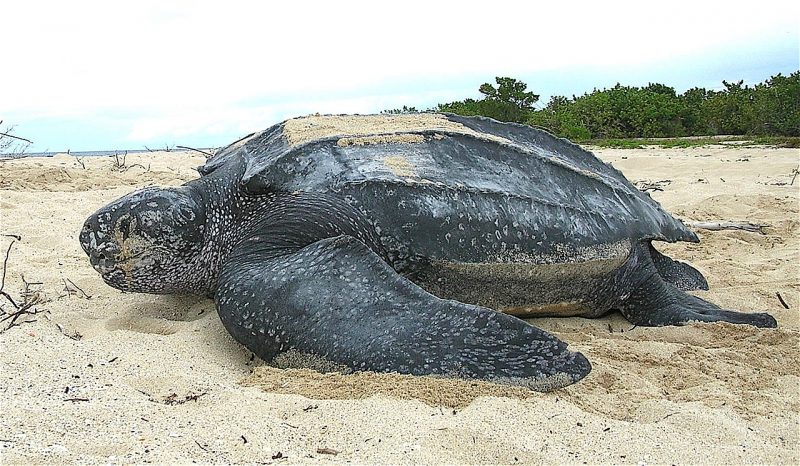
Anatomy and feeding habits
Sea turtles don’t have teeth. They have beaks, which are made out of keratin, the same thing our nails are made out of. Turtle shells consist of over 50 bones fused together. So, this literally means they wear their bones on the outside. Also, their bones are light and spongy, which helps them float.
Marine turtles live in most of the world’s oceans, apart from cold polar seas. They tend to spend their lives in relatively shallow continental shelf waters. They might not be voracious killers like sharks, but some turtle species are very important predators that help to keep ocean food chains healthy.
For example, hawksbill turtles eat lots of sea sponges, which would otherwise out-compete reef-building corals. So, the turtles help to protect the coral reefs, which are crucial for the survival of many other creatures.
The leatherback turtle largely eats jellyfish, which helps stop jellyfish from depleting fish stocks. And that benefits other animals in the food chain, as well as people.
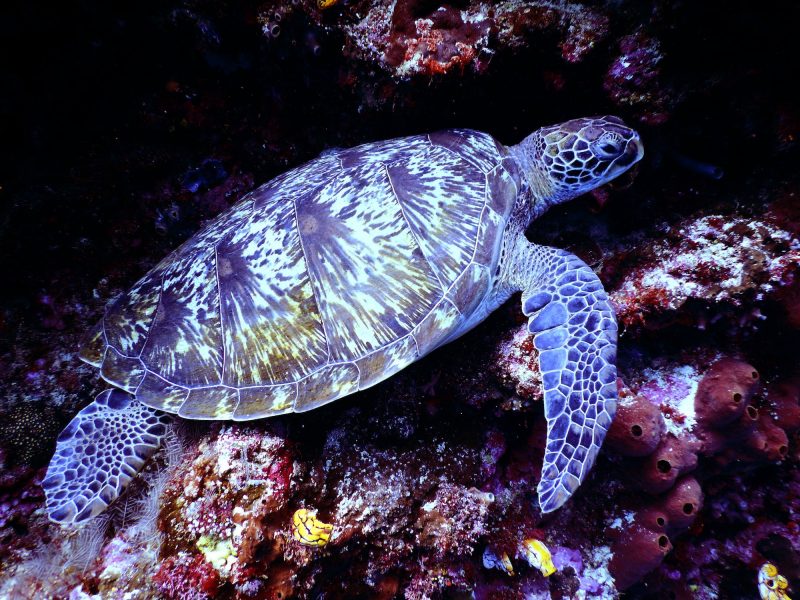
Sea turtles are natural navigators
Sea turtles can migrate over incredibly long distances. A female leatherback holds the record. She swam nearly 13,000 miles (21,000 km) over 647 days from Indonesia to the West Coast of America.
Sea turtles use Earth’s magnetic fields to navigate. If they were X-Men, they would have geomagnetic abilities. They have an internal biological GPS. They have particles of magnetite (a magnetic mineral) in their brains. The magnetite plays a role in orienting sea turtles to Earth’s magnetic poles. So, they have this map “printed” in their brains since the moment they are born.
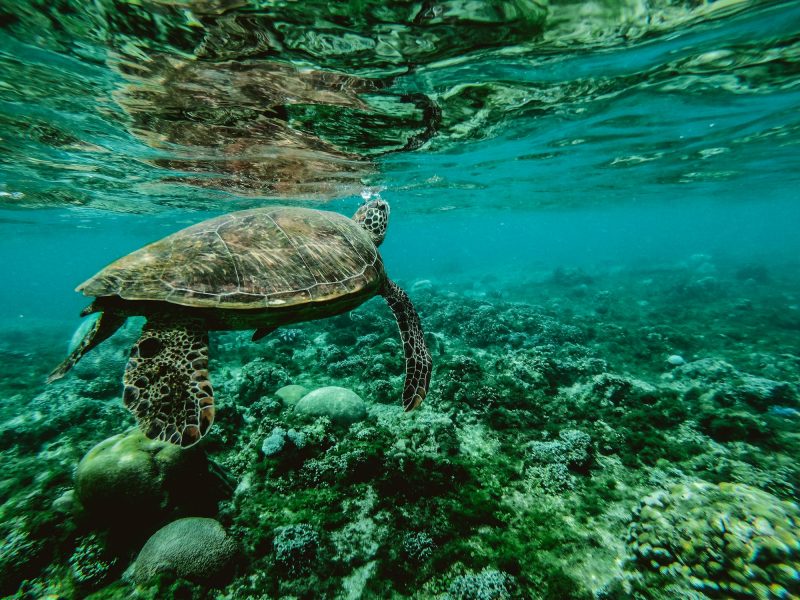
Eggs and nests
The sex of turtles is not determined by sex chromosomes, as in most vertebrates. It’s the temperature of the nest that determines the sex of the hatchlings (baby sea turtles). If the temperature is warm, around 88 degrees Fahrenheit (31 Celsius), most of the hatchlings will be female. So, when temperatures are lower, around 82 degrees Fahrenheit (28 C), then most of the hatchlings will be male.
Once mature, male turtles never leave the sea. But females come ashore to lay eggs, typically on the same sandy beach where they themselves hatched, thanks to their biological map.
The females dig a hole in the sand, then lay their eggs. They can lay more than 150 eggs at a time! A clutch is the name for a group of unhatched eggs. After laying eggs, the mother returns to the sea, leaving the little creatures to their fate.
Less than 1% of the hatchlings will survive to reach adulthood. Predators such as crabs and birds often kill the hatchlings as they make their way from the nest to the sea. And when they reach the shallows, fish eat many more of the newborn turtles. Life as a marine turtle is tough from day one!
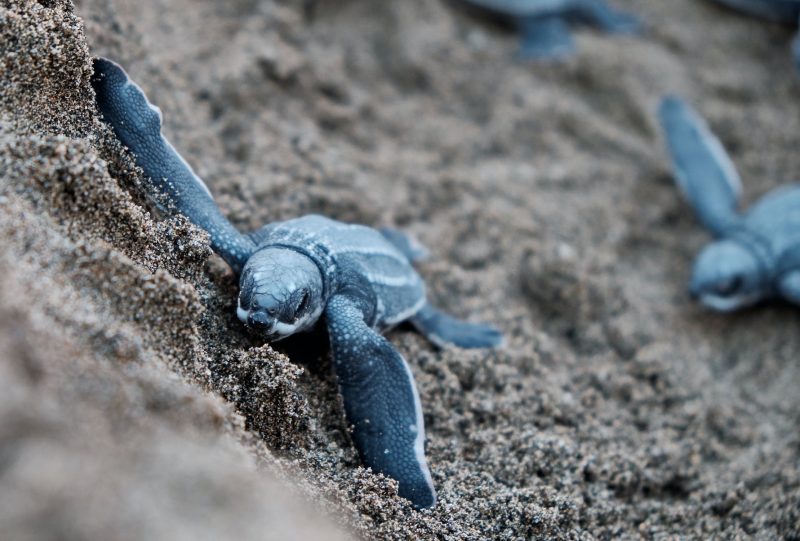
Threatened with extinction
These amazing creatures have been navigating our oceans for millions of years. They are brilliant navigators, swimming hundreds or thousands of miles, but they face lots of threats along the way. Even under “natural” conditions, relatively few young marine turtles survive their first year of life.

They need our help to survive because they’ve been affected by human activities, such as fisheries, illegal wildlife trade and climate change.
All seven sea turtles species are threatened with extinction. Their populations have dramatically declined in the past two centuries. They get caught in fishing nets, and people use them to create turtle products. But one of the worst threats is plastic. Plastic pollutes their habitats. Then they eat it, it poisons them and then they die. Or they get stuck among plastic trash. Around 13 million tons of plastic end up in the water every year.
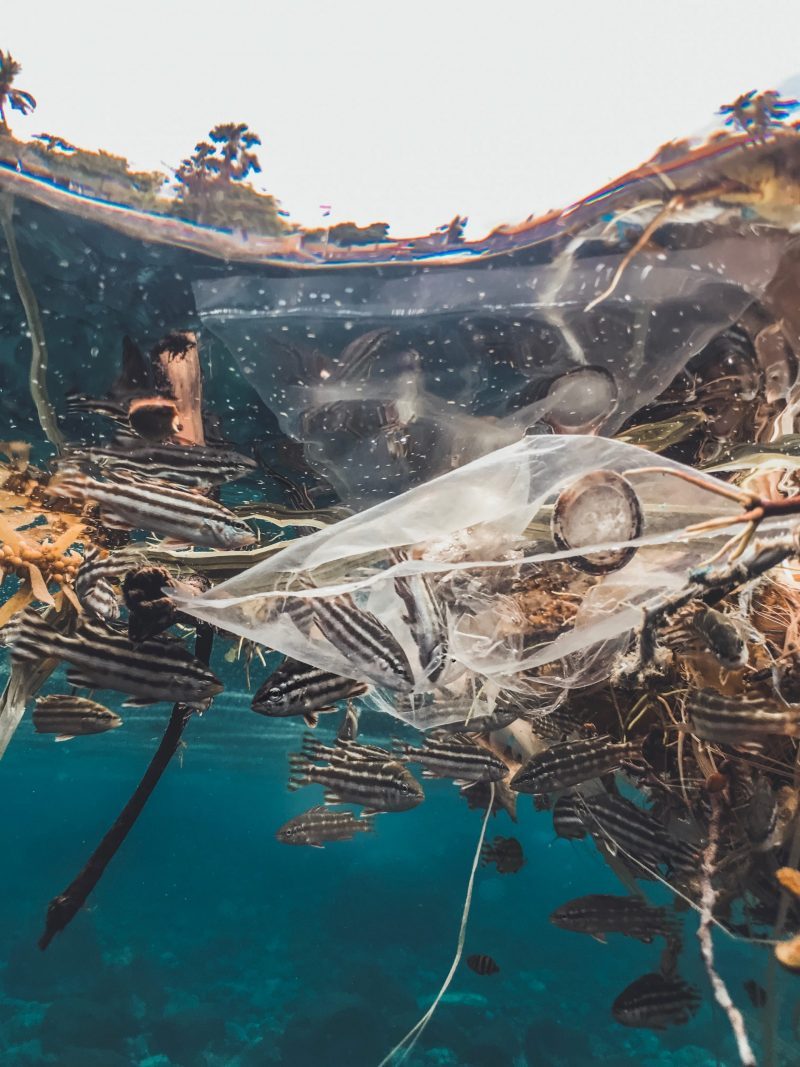
And if temperatures keep rising due to climate change, there will be more females than males, skewing the sex ratios.
Light pollution and sea turtles
According to the International Dark Sky Association:
Of all the animals on our planet, perhaps none are under more threat from light pollution than sea turtles. Sea turtles live in the ocean, yet they hatch at night on sandy beaches. Hatchling sea turtles have one immediate goal to ensure their future survival: find the ocean. They have evolved to locate the sea by seeing the brighter horizon over the ocean, and moving away from landward silhouettes. On a natural beach the newly hatched sea turtles find the open horizon and make for the water.
Adult female sea turtles have a hard time finding an appropriately dark beach for laying their eggs, and the lights of our cities confuse their hatchlings. Instead of reaching the safety of the ocean, the newborn sea turtles often head for illuminated roads, civilization, danger and death. In Florida alone, millions of hatchling sea turtles die this way every year.
So if you live near the beach, turn your lights out for sea turtles!
What else you can do
There’s even more you can do to help save turtles.
Many organizations keep beaches clean. Also, they use signs and tape around the nests, to keep people from disturbing the turtles. Plus, they look out for the nests when the mothers leave the beach. Thanks to these mediations, they can help stop the decline of sea turtles.
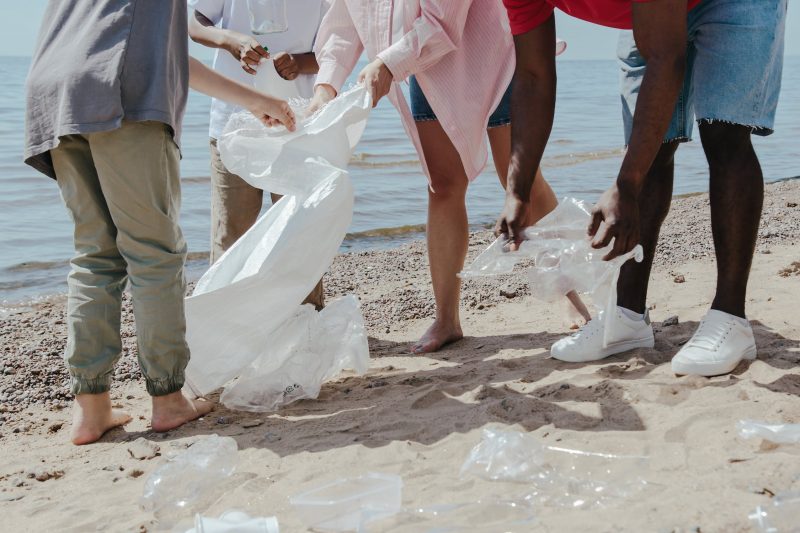
Stop plastic at its source, and take responsibility for your plastics. Be part of the solution. Let the native marine life have free and healthy lives in the oceans they have navigated for millions of years before us.
Thank you to the amazing photographers from Pexels, Unsplash and Wikimedia.
Bottom line: All you need to know about sea turtles: as old as the dinosaurs, incredible navigators and natural survivors. But they need you. Learn what you can do to help.
How WWF protects sea turtle species across the Pacific
How you can reduce plastic waste
Seahorses are tiny, ravenous creatures: Lifeform of the week











